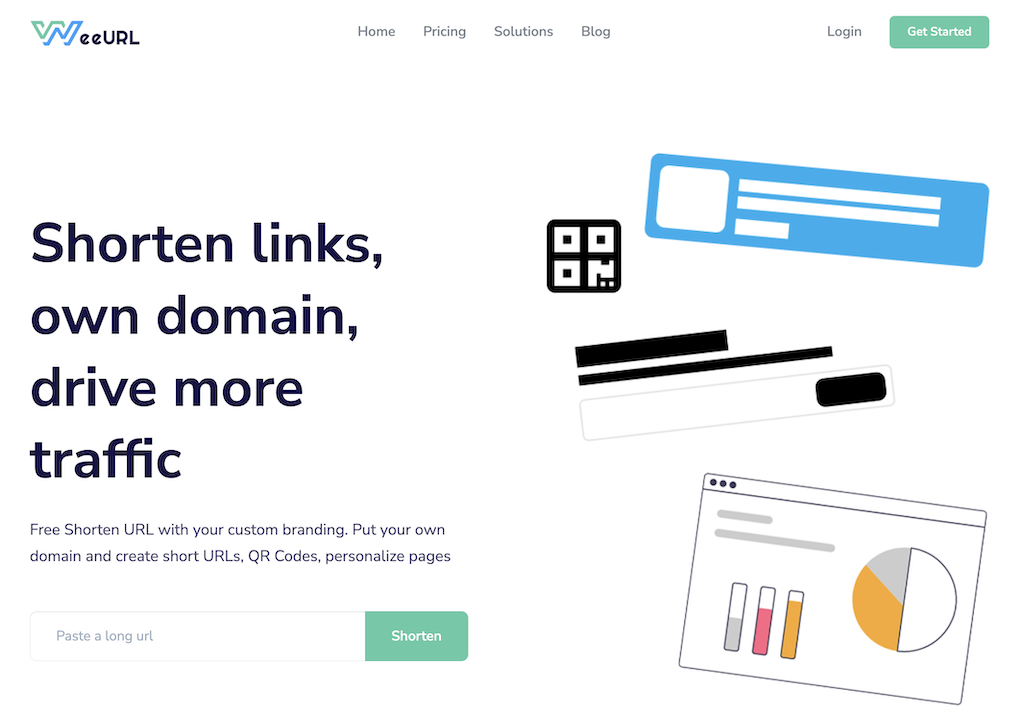
Shorten Link Free
Shorten links for free with our easy-to-use tool. Save space and make your links look more clean, professional, and easier to share, all at no cost.
I. Introduction A. Explanation of what a shortened link is
A shortened link is a condensed version of a long and unwieldy URL that is created through a URL shortening service. The shortened link redirects the user to the original webpage or resource and is used to make sharing links on social media or email more manageable and professional-looking.
B. Importance of using shortened links
Shortened links are essential in many situations, especially when sharing links on social media platforms like Twitter or in email marketing campaigns. With the limited character counts on social media, longer URLs can quickly eat up valuable space, making it challenging to get your message across. Additionally, shorter links are easier to remember and share, making them more accessible and user-friendly.
II. How to Shorten a Link A. Steps to shorten a link using popular URL shorteners (e.g. WeeURL, Bitly, TinyURL, etc.)
There are many URL shorteners available on the internet, and most of them are straightforward to use. Here are the basic steps to shorten a link using some popular URL shorteners:
FreeShortURL: Copy and paste the long URL into the FreeShortURL homepage and click the "Shorten!" button. The shortened link will appear on the screen, and you can copy it to your clipboard.
Bitly: Copy and paste the long URL into the Bitly homepage and click the "Shorten" button. The shortened link will appear on the screen, and you can copy it to your clipboard.
B. Benefits of using a URL shortener
Apart from making URLs more manageable and easier to share, there are other benefits of using a URL shortener. URL shorteners provide data tracking and analytics that help you track clicks, views, and shares, giving you valuable insights into your audience and marketing efforts.
Additionally, many URL shorteners offer features like password-protected links, QR codes, and custom domains, giving you greater flexibility and customization options.
III. Custom Short URLs A. Explanation of custom short URLs
Custom short URLs are a branding and marketing tool that allows businesses to create personalized and unique short links. A custom short URL can reflect your brand or business name, making it more recognizable and memorable to your audience.
B. How to create a custom short URL
To create a custom short URL, you will need to register a domain name and set up a redirect. You can either do this yourself or hire a professional to help you. Many URL shorteners offer custom domain services, allowing you to use your domain name instead of their own.
C. Benefits of using a custom short URL
Custom short URLs provide a range of benefits to businesses, including increased brand recognition, improved click-through rates, and enhanced credibility. Custom short URLs can also help businesses track and analyze their marketing campaigns, allowing them to make data-driven decisions and optimize their efforts for better results.
IV. Best Free URL Shorteners
A. Overview of the best free URL shorteners available
B. Comparison of the features and benefits of each shortener
C. Conclusion on the best free URL shortener for different use cases
V. How to Make a Link Shorter
A. Overview of different methods to make a link shorter
B. Explanation of manual link shortening techniques (e.g., URL redirection, HTML tags)
C. Overview of URL shortener tools and software
VI. Advantages and Disadvantages of Shortened Links
A. Explanation of the pros and cons of using shortened links
B. Discussion on potential security risks and how to mitigate them
C. Tips on how to make the most out of shortened links while staying safe and secure
VII. Conclusion
A. Recap of the benefits of using shortened links
B. Final thoughts on the importance of using shortened links in today's digital age
C. Call-to-action to start using URL shorteners to improve your marketing efforts and user experience.
Note: This is just a basic outline, and you can add or remove sections as per your requirements. Remember to use the keywords you provided throughout the blog post and optimize your content for SEO. Good luck with your article!
